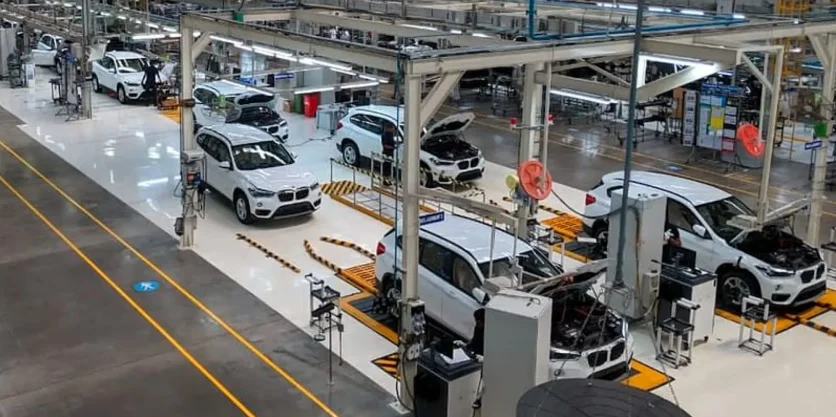The idea of starting an automobile business in India can be exciting. This niche offers vast opportunities for entrepreneurs, considering that the India Auto industry is one of the largest in the world, with a contribution of over 7% to India’s GDP. This business idea branches into several sub-niches, from vehicle dealerships and auto parts retail to service centres and tyre businesses. In addition, the digital revolution and the growing demand for EVs have given the business plan a lot of potential.
However, we must understand that any business comes with a well-thought-out preparation and strategy. From idea to launch, the road includes bottlenecks such as legal considerations and complex logistics plans. These can be managed by clearly understanding the Indian conditions and infrastructure and by analyzing solutions for each bottleneck before they arise.
So, this guide is to help you step confidently into the automobile business in India. From the business model to building a reliable network, this section provides all you need for a well-grounded start.
Step 1. Start with your Automobile Business Model
Start by choosing a niche instead of launching into a “one-size-fits-all” business. A good starting point is to study the geographical area you want to launch in, analyze what services are missing, and what you can bring that is better than what the competition offers. The automotive competition is tough, so you need to think carefully about your unique selling point that truly solves customer pain points.
The automotive industry offers various business models. Start with one and gradually expand to succeed in operating with the team, supplies, customer demand, and service quality. Here are some of the ones you can choose from:
- Vehicle Dealership – Selling new or used cars under a manufacturer’s brand;
- Auto Spare Parts Retail – Selling components, lubricants, batteries, accessories, details, etc.
- Vehicle Service Center – Providing car repair, servicing, and maintenance.
- Tire Retail & Installation – Selling, fitting, and maintaining tires through rotation, balance, flat repair, etc..… (an increasingly competitive space).
- Used Car Marketplace – Facilitating C2C or B2C transactions online or offline.
- Car Wash Service is a low-to-medium business model applicable to urban and suburban areas. You can start with a standalone affair and then expand by combining it with tyre shops or service centres.
Each sub-niche requires a detailed analysis of the necessary capital, space needs, and specific licensing requirements.
Step 2: Step 2: Research Market Demand, Location, and Competition
You can’t launch without doing your homework first. Location, demand, and competition in India are everything.
Market demand helps you understand what your customers are missing so you can bring the product/service they are looking for. Location shapes your business by understanding vehicle density and the potential customer flow you will cover. Customer preferences and density differ between a metro city and a Tier 2 town.
Finally, competitive analysis makes you … become better than the competition. This step reveals what already works in your area, the market gaps, sets competitive pricing, and, most importantly – avoids launching an over-saturated niche.
These three aspects help you position your auto business strategically. You shall have a clear vision of what your customer wants, where it will be convenient for him to use your service/product, and how you are more advantageous than the competition.
Examples of Regional Opportunities
The following examples of business solutions and challenges will make you understand the whole picture better:
Delhi-NCR
There is a high demand for vehicle servicing and accessories in this area. A potential business solution is to set up a vehicle service centre providing AC repair, accessories, and detailing. An express car wash can also work.
Yet, the possible bottlenecks include extremely high competition and pollution control regulations affecting workshop operations. You might need serious capital to make yourself attractive to your competitors, so you need to analyze your opportunities well.
Kerala
This area has a strong market for used cars and tyres. Considering the high vehicle density and rural road access, wheel/tyre maintenance services are in regular demand. So, a tyre retail and installation service suits Kerala’s infrastructure.
Yet, the challenge is setting up a new tyre dealership and the space to store them. Also, you need professionals in installation, repair, rotation, etc., who can work for a good reputation for your centre.
Pune and Hyderabad
Emerging EV ecosystems mark these areas. You can think of an EV charging station or a specialized EV service centre. At the same time, you need to weigh the investment effort because the high initial capital in charging equipment and real estate can complicate your development.
The idea is that every automotive business niche has challenges that you need to evaluate to understand if you are financially, educationally, and strategically prepared. Research in market demand, competition, and location is indispensable in this context. Google Trends and online competitor analysis platforms should not be missing from your work tools.
Step 3: Where to Source Products – Buying Direct vs. Supplier Partnerships
Sourcing products is a critical area, especially if deciding to step into the car accessories & detailing or tire-related business niche. You need to consider various options and choose based on available space, investment capital, and convenience. For example, you can choose between:
- Maintain inventory at your local shop: this requires storage space and upfront investment.
- Establish networking with multiple suppliers or opt for dropshipping models, which is easier with fewer risks and capital lock-in.
No Inventory Keeping- Also an Option
In the digital age, operating online is one of the most convenient and financially stable ways to sell automotive parts, accessories, and/or tyres. The phone is the only connection point between supplier and customer through which professional communication and quality services/products can be offered outside of inventory spaces.
You can become a bridge between major car detailing or tyre dealers by promoting their services and products through your online platform. The United States has long taken over this business model, which has proven to be efficient, with minimal investment and risk. A good example of inspiration is NeoTires and Simple Tire, which we will analyze immediately.
NeoTires and Simple Tire: Modern Tire Business Models
Both platforms set up their business in the U.S., which, like India, has a massive demand for tyre supply. NeoTires focuses on fast tyre delivery nationwide and competitive prices.
Its business model avoids holding massive inventory and tyre maintenance service (installation, rotation, or repair). Instead, it focuses on fast and free shipping (for most products), competitive pricing, quality customer support and impartial tyre reviews that help customers choose the right product.
At the same time, NeoTires partners up with the largest independent suppliers of tyres that take over inventory. NeoTires finds customers, ensures fast shipping, and professionally answers drivers on all tire-related matters, pushing sales in a domino effect.
Simple Tire operates a similar business model focusing on an easy tire-buying process without significant inventory overhead. Additional services like Mobile Tire Installation and Tire Replacement Coverage make them even more attractive to customers and more scalable from a business perspective.
These two examples show how flexible an online business can be. Indian entrepreneurs can mirror these models in the local environment with much less effort than a business with a massive product inventory.
4. Go Online or Stay Local?
The physical presence of the Indian automobile business is enormous. So, the competition is massive as well. Some gaps might be uncovered in the digital presence, and you can find less resistance here. With a well-crafted profile, a user-friendly online store on the web and mobile, and a little creativity in your social networks, you can increase your visibility to your competitors (as long as you don’t forget to study the competition to avoid over-saturating the market, remember?)
To start with, think of:
- Setting up a Google Business Profile for local discovery
- Creating a website or listing on platforms like Justdial, OLX Autos, or Boodmo
- Partnering with e-commerce platforms, if applicable
- Considering online-to-offline (O2O) models that work particularly well for tyre sales, accessories and detailing, or used cars.
Step 5: Build a Reliable Network
Every entrepreneur in any industry needs relationships, networks, and partners. Once you enter the Indian automotive ecosystem to do business, you must build your Network. Part distributors, mechanics, insurers, detailers, tyre installers, and RTO agents can bring tremendous value at the right time.
Remember that your Network is your net worth, so attend auto expos, talk to fleet operators, and join local business associations. Be anywhere: cars, entrepreneurship, and strategies are discussed. The Indian automobile ecosystem thrives on relationships, and you will find it difficult to penetrate the market without their support.
Indian Auto Business: Final Tips To Make It Work
The automobile business is a high-potential opportunity, yet it can be full of challenges before you can enjoy your ROI. For this reason, it is wise to weigh all the risks and benefits in advance. Don’t focus on income only. Indian drivers value honest prices and reliable service first. So, prioritizing transparency and building trust will make you grow.
Thoughtful planning, strategic investment, careful sourcing, and a deep understanding of your customers’ needs are four pillars that keep you grounded and objective from a business perspective. Whether it’s about selling new or used cars, accessories or tyres- adapt to your customer and work to ensure his retention and earn his referral to other drivers. Good luck!



